Tips On How to Survive a Bear Attack
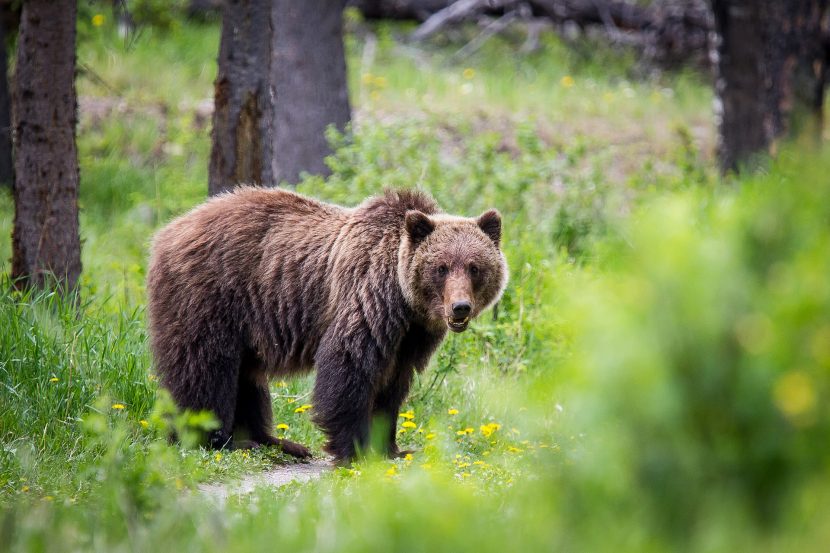
Bear attacks are small on the scale of other risks while out in the wild. From 2010-2018 there were 51 fatal attacks, 12 of which were in Alaska. This is approximately 3 attacks per year for the past 18 years.
However, as human population sizes continue to encroach on bears’ natural habitats, we are seeing these numbers increase dramatically. Black bears can be found almost everywhere throughout the United States and Canada, and brown bears, also known as grizzlies, are making a comeback throughout the Northwestern U.S. and Canada.
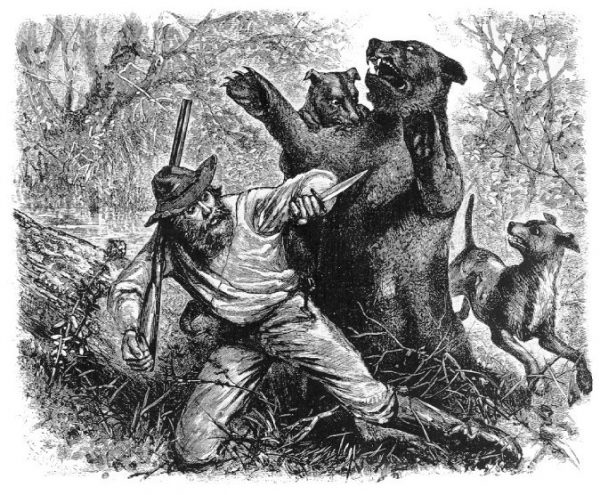
This is why it is important to educate yourself on the best ways to avoid these creatures while spending time in their territory and what to do if a fateful encounter does occur.
How to Avoid a Bear Attack
The best way to survive a bear attack is to avoid an encounter altogether. Bears are strong, adaptable creatures that can run faster, climb better, and kill better than any of us humans could dream of doing. So, how can you prevent yourself from coming eye to eye with a bear? And how to keep them from attacking if you do?
Always carry bear pepper spray when in bear country!
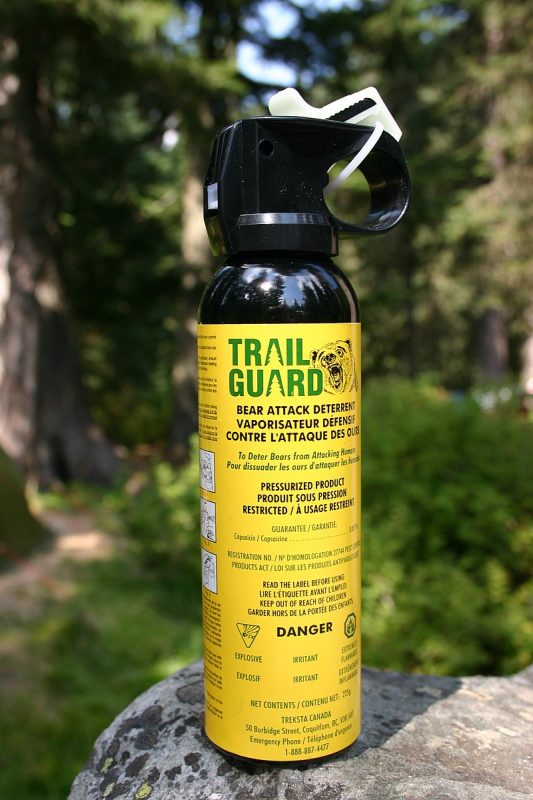
According to the Fish and Wildlife Service’s investigation into human and bear interactions, they found that using bear spray was 92% effective at preventing attacks. Compare that to the 67% effective rates of using a firearm and it is a pretty staggering statistic.
However, the spray is only as good as the person wielding it. This is why you want to make sure to practice how to use it so you are not learning while in danger. Furthermore, you should be sure to carry the spray in a way that allows quick and easy access, such as a waist holder, so you aren’t fumbling to get it when every second matters.
Smells
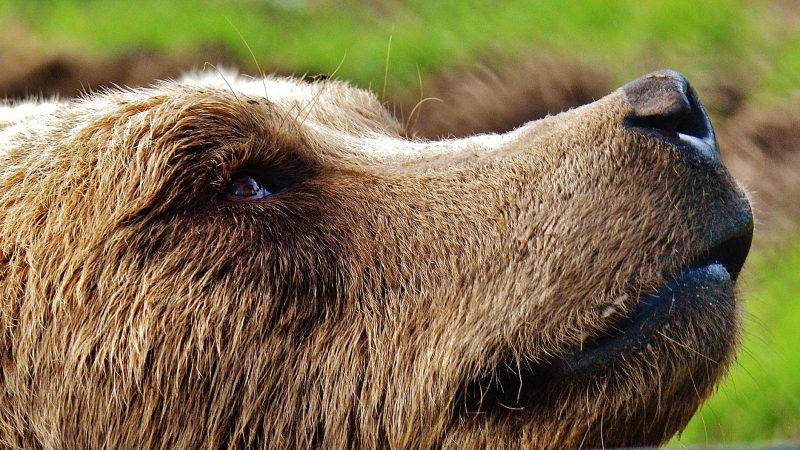
A bear’s sense of smell is so adept that it can pick up scents from 20 miles away. With a nose that strong, you have to assume that they can also smell the floral deodorant you put on that morning. While spending time in bear country, you must be overly aware of any scented products you may have. This includes things like chewing gum, deodorant, and even toothpaste. All of these can be mistaken for food and bring a bear to your doorstep. Go with unscented options where possible, such as soaps and wipes.
Some smells you just can’t avoid having while out in the wilderness – the smell from your cooking gear being one. Yet, there are still ways to take extra precautions within this realm.
First is to always set up your cooking area 100ft away from your tent or sleeping area. This will keep the bears a healthy distance away if they do happen to wander into your camp looking for scraps. The next is to always wash your dishes and discard food scraps an equal distance away.
You will also want to make sure that your food is packed separately and that you never bring it into your tent. This is just asking for a curious bear to demolish your setup with you inside just because you wanted a Snickers in close reach.
Be Alert and Make Noise
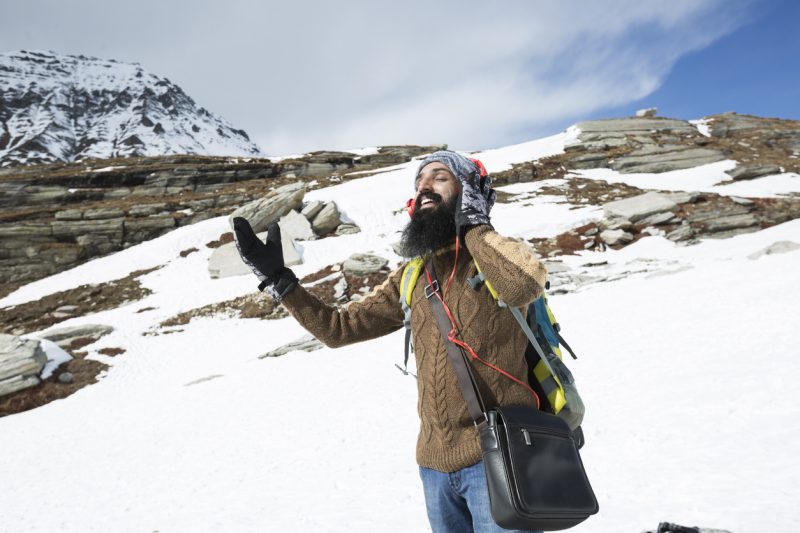
The quickest way to get a bear to attack is to catch them off guard. This is why making noise is pivotal when out in the wild. If you are hiking alone you can accomplish this by wearing a bear bell, singing out loud, or talking to yourself. These will all alert bears to your presence, giving them enough time to scamper off before any further contact is made.
Being aware of your surroundings is equally as important. Watch the trail for signs of prints or fresh scat that could be an indicator of a bear in the area. Don’t wear headphones! If you have run into a bear and it has decided to attack from behind, you will never even know what hit you.
Keep Dogs on Leashes
It is understandable that you want to let Fido run while out in the wilderness, but it can be a crucial mistake. In fact, it is one of the leading causes of bear attacks in North America.
If your dog is running ahead of you on the trail and scares a bear, that bear is likely to come after your dog. And what do most dogs do when they are afraid? Run to hide behind their owners.
This puts you in the direct line of fire between your dog and the angry bear. If you want to let them off-leash, do so in open areas or where you might be camping so you can see what is ahead and keep a closer eye on them.
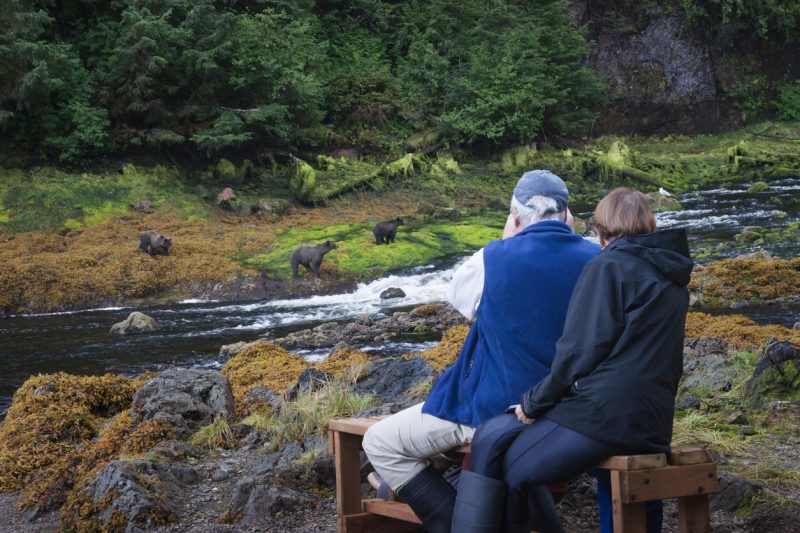
Understanding the Bears in the Region and Their Habits
In North America, there are three types of bears that you may encounter: black bears, grizzlies (brown bears), and polar bears. All three have distinguishing characteristics and personalities that are important to be aware of before heading into their territory.
Black Bears
Black bears are the most common species you will find in the U.S. and Canada, with an estimated 600,000 currently in existence. They are curious, timid, and mostly tame compared to their larger counterparts and luckily the most likely you will run into on the trail. Here are some of their distinguishing characteristics:
● Colors can range from dark black to a light blonde
● Height ranges from 3-7 feet
● Weight can range from 90lbs to 660lbs
● Scare easily
● Strong climbers
● Mating season Mid-June to Mid-July
Grizzly Bears
Grizzly bears have a much smaller population size and are mostly found in Western Canada, Alaska, Wyoming, Montana, and Idaho. They mostly live a solitary lifestyle on a steady diet of berries and fish. While not extremely territorial with each other, grizzlies are known for their aggressive nature towards humans.
● Generally around 6.5ft tall
● Dark brown to tan fur
● Notable hump on their shoulders
● Mating season May – July
Polar Bears
Polar bears are both the largest and most dangerous bears on the planet. Their small population is found around the Arctic Circle through Alaska and Northern Canada.
Due to their lack of human contact, they are also the only bear that generally sees humans as potential prey. This, along with their stature, means steps should be taken to avoid them at all costs.
● Fur is white to yellowish in color
● 6-8ft in height
● Primarily carnivorous diet
● Mating season April to May
Surviving a Black Bear Attack
Due to their overall fearful and skittish nature, black bear attacks generally occur during mating season or when you happen upon a mother and her cubs. That being said, there are some strong measures you can take to survive an aggressive attack.
DO NOT RUN!
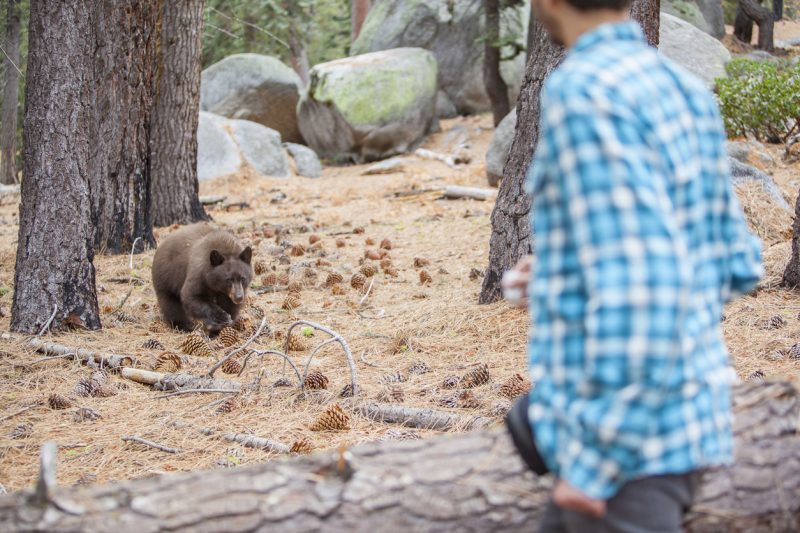
This is true for all bear attacks. Bears can run up to 40mph, and black bears specifically are extremely agile tree climbers so outrunning them or climbing to freedom is not likely to work. Also, running triggers an instinctual response for the bear to pursue, so stand your ground!
DON’T PLAY DEAD!
This is a common misconception between surviving a grizzly attack and a black bear attack. A black bear attack is mostly about intimidation, so if you can out scare the bear you will come out victorious. Stand up straight facing the bear, and slowly back away.
MAKE YOURSELF BIG!
Remember: a black bear attack is all about intimidation. Making yourself appear bigger by spreading your arms and legs out will make you appear as a larger threat than you actually are. If you have trekking poles spread them out as well; if in a group, interlock your arms while facing the bear to seem like one very large creature while using a deep voice to shout it down.
PUT UP A FIGHT!
It may seem pointless to fight against an animal 2-4 times your size, but it works. The more of a struggle you put up the more likely they are to see you as a bigger threat than they initially anticipated. Hit the bear in sensitive areas such as the nose, eyes, ears, and underbelly. If you have bear spray, make sure this is the first step in your fight.
GIVE THE BEAR A PATH FOR RETREAT
There is nothing scarier for any animal than to be backed into a corner by a potential threat. This is when a bear is most likely to lash out. Be aware of your surroundings and be sure you are not standing in front of their easiest means of escape. If you are, slowly sidestep out of the path while continually facing them so they can run away peacefully. If you back them into a corner they will attack.
Surviving a Grizzly Bear Attack
Grizzly bears are very different from their black bear counterparts. When they attack, it is with the intent to neutralize the threat, not simply to intimidate it. This is why different tactics need to be employed if you find yourself on the receiving end of a grizzly’s rage.
USE BEAR SPRAY
I know this may seem redundant, but it is the absolute best line of defense and an absolute must-have if hiking through a grizzly bear wilderness. You are not likely to inflict much pain onto them any other way.
HIT THE GROUND!
If the bear spray falters for whatever reason, your next best option is hitting the ground and protecting your vital organs as best you can. Interlock your fingers around your neck while curling up into the fetal position to protect your chest and stomach. This will not necessarily stop the attack but serves as a way to reduce the amount of damage the bear inflicts. If you can do it quickly, try swinging your backpack around to the front to add an extra layer of protection.
PLAY DEAD
Do not struggle or fight against the bear as it will signal that the threat you pose still needs to be neutralized. Instead, play dead in the fetal position until the bear has decided it has squashed the risk. It is also important to note that you will want to stay in this position for up to 20 minutes after the bear has stopped attacking. Grizzlies tend to linger around to be sure that you are dead.
The only time you want to fight back during a Grizzly attack is as a last resort if no other measures have helped.
Surviving a Polar Bear Attack

To be totally transparent, the likelihood of surviving a polar bear attack are slim to none. You best option for avoiding this catastrophe is simply making sure you don’t come into contact with one.
They are carnivorous creatures that will likely see you as prey. In this case, intimidation and neutralization of the threat aren’t on the agenda. If a polar bear attacks you, it wants to kill you. That being said, here are a few things to consider if you find yourself in this awful situation.
USE BEAR SPRAY
This is likely the only line of defense that will save your life in this scenario. The hope is that it will cause enough discomfort to change the risk-to-reward assessment the Polar bear previously made. However, you will want to be sure to anticipate the arctic winds so that your protective cloud of spray doesn’t fade without making contact.
DON’T ACT LIKE PREY
As we discussed before, running away only triggers the hunting instincts, and these bears are much faster than we are. You should make them think that you are something to be afraid of by standing tall and speaking in a deep and loud voice. This will also bring attention to yourself, hopefully throwing off their predatory mindset.
DON’T GIVE UP!
If you are officially being attacked, it is time to fight back with all of your might. Playing dead will only make the bear’s job easier. Hit it in the eyes, nose, and ears using any defense equipment you can find. Fight like your life depends on it because it most certainly does.
What to Do After You Have Been Attacked
If you find yourself mauled but alive following a bear attack, the next steps are just as crucial to your survival.
- Assess the severity of your wounds and treat them as much as possible using your first aid kit.
- Understand that the bear can still be in the area.
- If you are severely injured, do not try to hike out as it may increase blood flow and therefore blood loss.
- Get yourself as close to the trail as possible, putting yourself in the path of other potential hikers or rescue teams.
- Start signaling – whether this is through a hiking whistle, light signals, or yelling for help.
- Use any technology you have to alert help. GPS trackers with an SOS function were made for these types of situations.
